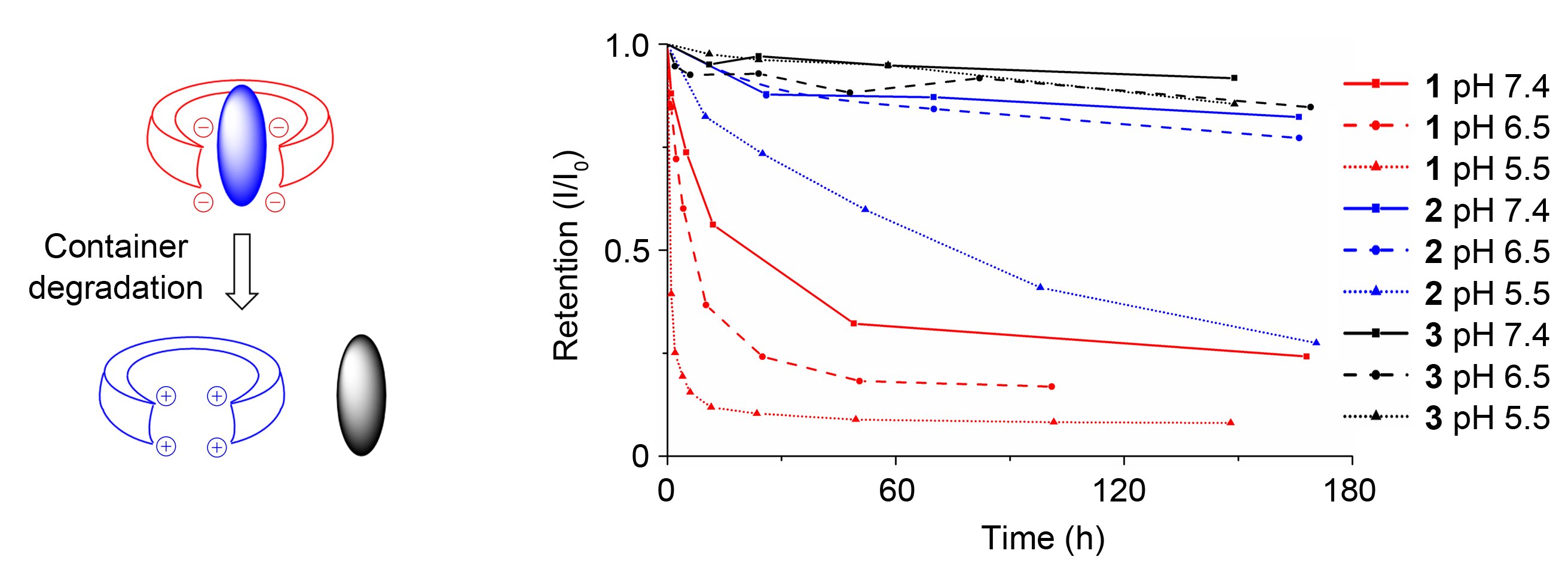In a recent study, Research Associate Professor Jia Liu from SIAIS and Professor Da Ma from Fudan University has developed an acid-labile acyclic cucurbit[n]uril (CB[n]) molecular containers for controlled drug release. This study has been published on Angewandte Chemie International Edition.
Pathological conditions such as tumors often lead to acidic microenvironment, making acid-labile drug carriers attractive topics for drug development. These acid-labile drug carriers can mediate highly efficient drug release under acidic microenvironment, thus enhancing the specificity of drug molecules. Acid-labile liposome, inorganic and organic nanoparticles and polymer-drug conjugates have been reported in previous studies. In this study, the teams led by Prof. Ma and Prof. Liu have re-designed biocompatible acyclic CB[n] molecular containers, enabling them to respond to acidic pH.
Chemical modification of cationic CB[n] containers with citraconic anhydride, maleic anhydride or succinic anhydride masks the amino groups on the arms of CB[n] containers with amide, converting the positively charged containers to negatively charged containers while maintaining their affinity to cargo molecules. The team found that these modifications render corresponding containers different stability under acidic environment. By a proof-of-principle study with proflavine, the team showed that acid-labile molecular container can promote cellular uptake of cargo molecules under acidic microenvironment.
Graduate student Dake Mao from the Department of Chemistry at Fudan University and postdoctoral fellow Yajun Liang from SIAIS at ShanghaiTech University are co-first authors of this study, and Prof. Ma and Prof. Liu are co-corresponding authors. This study was supported by Natural Science Foundation of China and ShanghaiTech University.
Details of this study can be found:
http://onlinelibrary.wiley.com/doi/10.1002/anie.201707164/abstract

Note: Mechanism of action of acid-labile molecular containers



